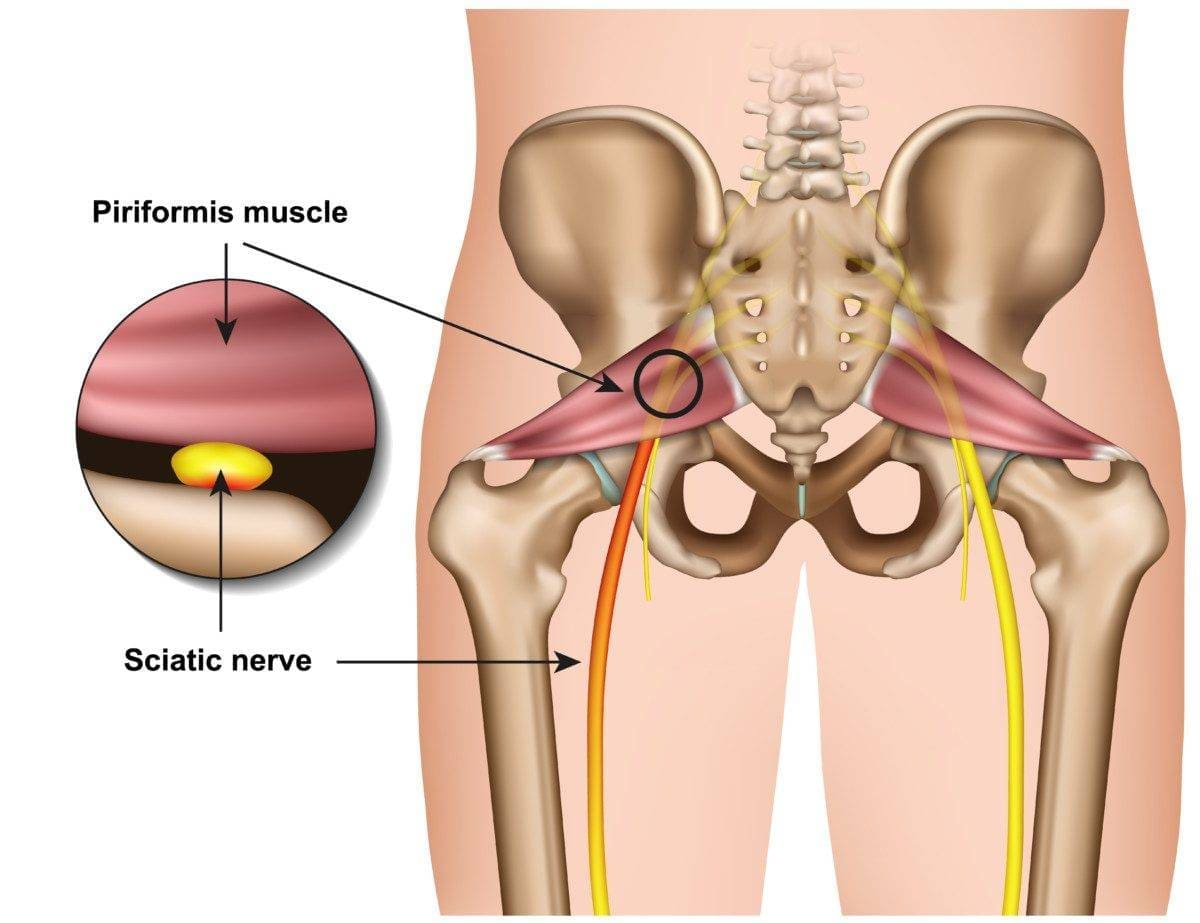By Dr Richard Thompson, DC
5 Minute Read

The most important (and sometimes most difficult) aspect from a clinical diagnostic perspective is determining the source of the sciatic nerve irritation or compression. When true sciatica is being experienced, many healthcare providers often lean towards an intervertebral disc herniation (the jelly-like cushion between the vertebrae) in the lower spine as the cause of the sciatic pain. However, it could be one or more of several other tissues or non-musculoskeletal causes of the sciatica instead of a disc injury. These could be problems in the ligament or muscles of the pelvis/buttock/posterior hip, infection in the vertebral column, and more seriously, lesions such as tumours in or around the spine. Fortunately most cases are not caused by the more serious, worrisome diseases such as cancer.
Sciatica can even be caused by chemical irritation of the nerve tissue from inflammation of the area, so even if the nerve isn’t being compressed or entrapped, inflammation from other injured tissues can cause the pain to travel down the sciatic pathway. When seeing a healthcare provider for assessment and diagnosis of your sciatica, asking questions like “where is the source of the sciatica” is helpful, as it helps you understand where the problem resides and what you need to focus on to help recover from the problem at home and at work.

Other common causes of true sciatica are what are referred to as entrapments (the nerve getting stuck to tissues it passes by or through). These entrapments can occur in a number of different tissues around the posterior hip, gluteal or hip rotator muscles, and/or hamstrings. The most often diagnosed condition where the sciatic nerve is entrapped in the buttock is called piriformis syndrome, where the piriformis, the largest muscle in the group of hip rotator muscles deep in the buttock, causes tension or compression on the sciatic nerve due to dysfunction or injury to the muscle. Anatomically, the sciatic nerve passes the piriformis either immediately above it, just below it, or in approximately 20% of the population, the nerve pierces directly through it. The goal of therapy in these cases is to relax the muscle tissue, eliminate inflammation caused by the entrapment, and ensure normal nerve mobility through the piriformis. Stretching and icing/heating at home can also be very helpful during your recovery from this condition.


First and foremost, assess what seems to aggravate the symptoms down the leg. Is it prolonged sitting? Bending forward? Laying flat on your back? Driving? Whatever it may be, whenever you are dealing with pain down the limbs, either radicular or referred, the primary goal is to promote ‘centralization’ of the symptoms, where limbs down the limbs disappear first and centralize towards the source in the buttock, pelvis or low-back. You can promote faster healing by reducing or avoiding positions of pain aggravation down the limb and maximize working and resting in positions of relief. Unfortunately this is challenging to do, which often leads to prolonged recovery times, but every little bit counts.
Early on when pain and immobility are significantly impacting your day to day, we need to think about pain, inflammation, and spasm control. This is best managed early with the application of ice in intervals on and off. Typically my recommendation for icing a low-back or buttock would be approximately 10-15 minutes of icing on and off as regularly as possible. There is no limit to how often you apply the ice – every time you apply it, you will get benefit. As pain becomes centralized and minimized, heat can be introduced to help now with tissue mobility and function. It’s also helpful to experiment with where you place the ice on your body, especially if you haven’t seen a healthcare professional yet to diagnose your condition. Referred or radicular pain traveling down the leg is almost always sourced to an injury in the low-back or buttock. If applying ice over the low-back doesn’t help reduce the pain in the limb, move it down over the respective buttock, or vice versa. As previously mentioned, the radicular or referred pain in the limb doesn’t always present with pain at the source.


